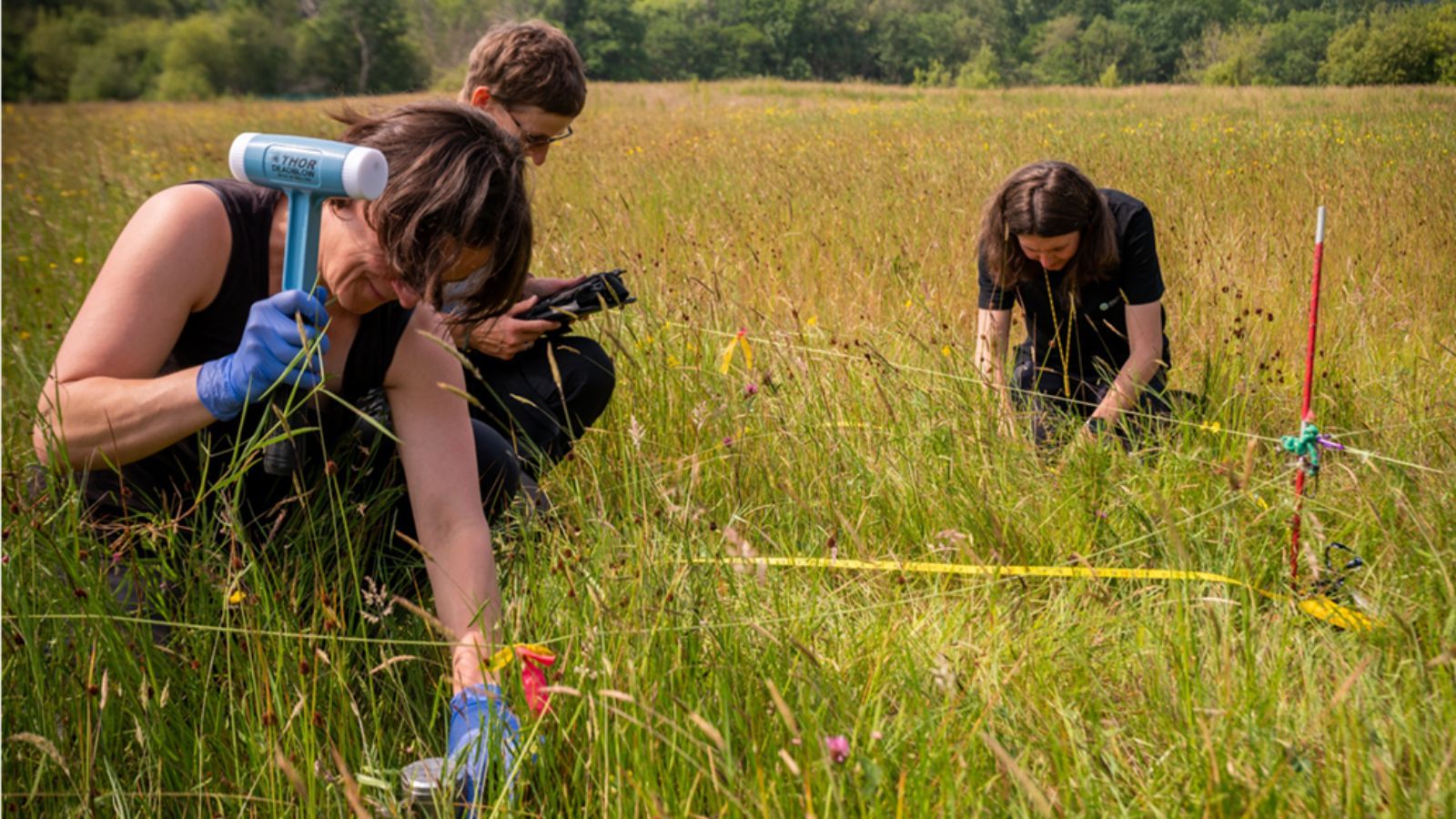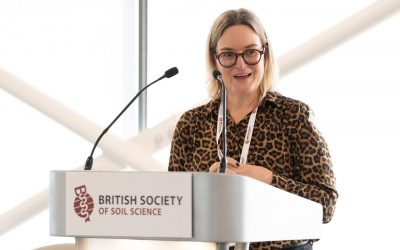A new study from the UKCEH Countryside Survey on soil carbon has been published in the European Journal of Soil Science. The study provides the first evidence of recovering national soil organic carbon in British croplands, after decades of decline. To view the full study, click here
Losing soil carbon is a well-known side-effect of soil disturbance, erosion and the removal of supporting plant biomass. Croplands in particular have seen a sustained, long-term loss of organic carbon in Great Britain, losing approximately 11% of their topsoil carbon stocks from 1978-2007, according to national soil monitoring data (CS Reports, UKCEH). This is a problem, as soil organic carbon is a key indicator of healthy soils – supporting food production, plant growth, biodiversity and drought resilience. At a global scale, soils also store the largest single reservoir or terrestrial carbon in the world, making it a vital resource to protect and restore as part of efforts to mitigate climate change. Many previous studies have demonstrated the potential for sustainable land management to restore soil carbon to cropland at local scales and under experimental conditions, but whether or not is possible to restore soil properties at nationally meaningful scales, under diverse environments and the many demands of commercial agriculture, has remained contested. However, new national monitoring data from UKCEH Countryside Survey published in the European Journal of Soil Science has now shown that the long-term trends of soil carbon loss are reversing in GB cropland topsoils, with significant recovery of soil carbon concentrations and stocks from 2007 to 2020. It is not yet known whether this increase represents net carbon sequestration from the atmosphere or carbon redistribution from other systems, but nevertheless, it demonstrates a real benefit to cropland soil health and offers hope that topsoil properties can be restored at national scale.
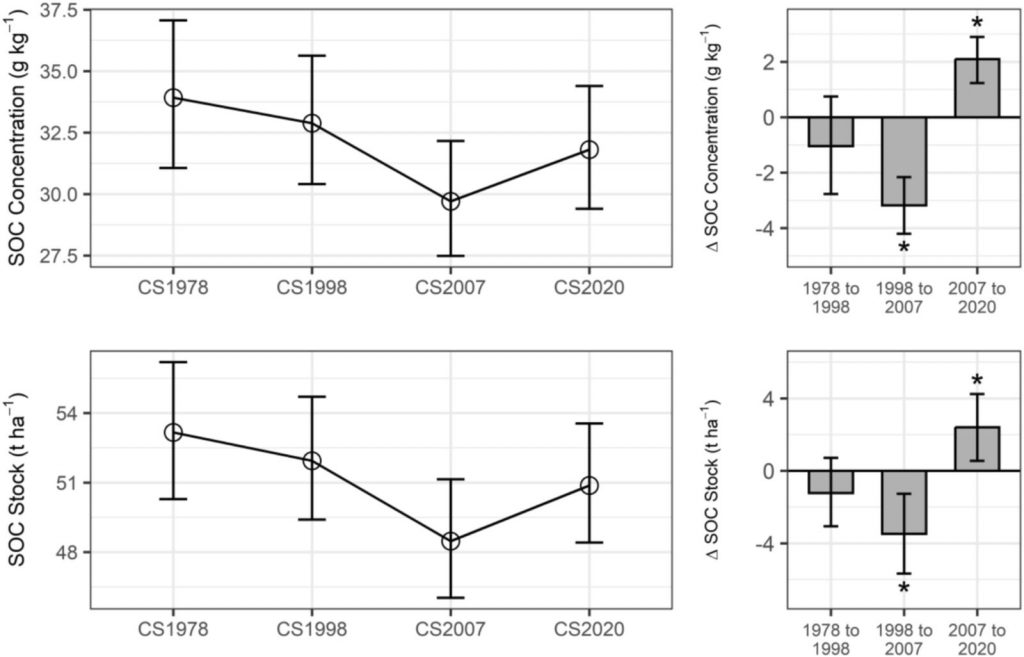
Trends in mean topsoil organic carbon (SOC) concentration (g kg-1) and stock (t ha-1) with bootstrapped 95% confidence intervals for the mean in each monitoring cycle for all cropland sites (left) and mean change in topsoil SOC concentration (g kg-1)
The UKCEH Countryside Survey has been monitoring soil health in Great Britain for 50 years as the longest running integrated national monitoring program in Great Britain. It collects data from over 500 1km2 across Great Britain in each monitoring cycle and samples over 1600 soil cores per year for analysis and public archiving, with the support of landowners granting access to their land. It uses consistent field and laboratory methods to support a reliable understanding of change over time, as part of the UK’s National Capability funding for science, providing open data on soils, plants and habitat condition in GB. Monitoring at this scale is crucial for identifying emergent trends in the environment and provides a critical national context for environmental policy. The present study uses data from over 100 of the monitored 1km2, to report on changes in cropland soil carbon from 1978 – 2020 from across GB. Following a long-term decline at rates of -0.16 t ha-1 yr-1 from 1978 – 2007, soil organic carbon content in topsoils is now increasing at an average rate of 0.34% annually or 0.17 t ha-1 yr-1, from 2007 to 2020. Increases in cropland carbon were accompanied by a significant decrease in soil bulk density, which is expected with an increase in organic matter, showing in increase in soil porosity.
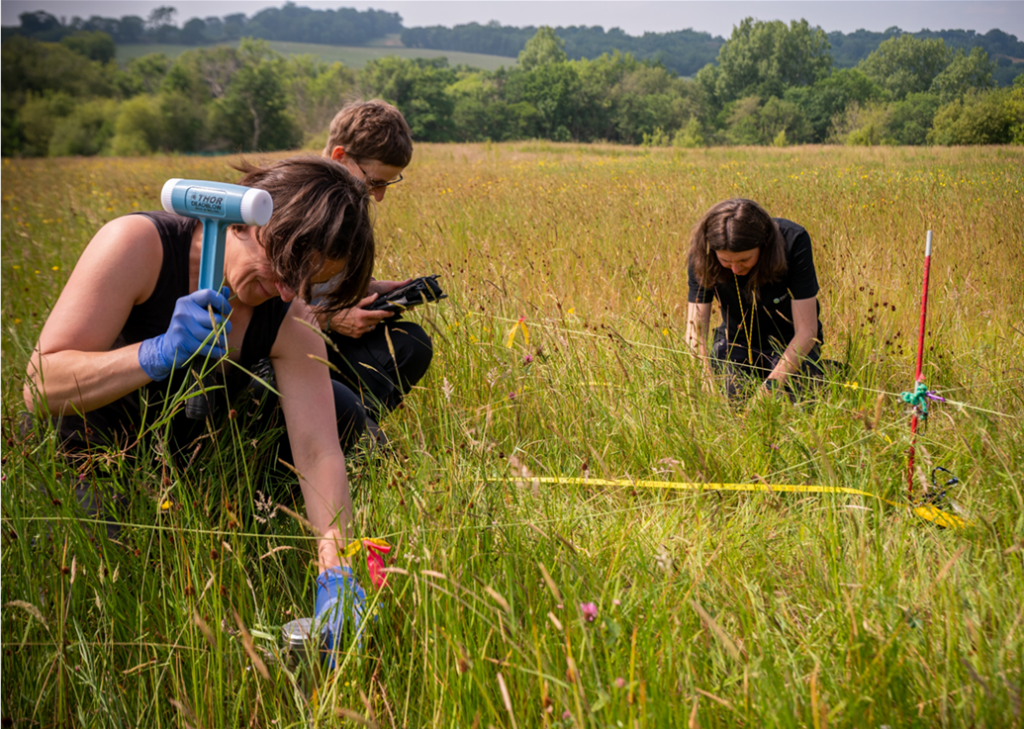
Countryside Survey surveyors in the field
Halting and reversing the loss of organic carbon from croplands has become a policy, research and management priority in many circles, because of the potential benefits to cropland system sustainability and food production, but also because of the possibility of sequestering carbon back into degraded soils. The latter if particularly difficult, and remains widely debated amongst scientists, because it would require carbon stored in the soils to pulled from the atmosphere (as opposed to relocated from other soils and terrestrial stocks) and must then be preserved through future cultivation. Many methods of sustainable land management have been promoted to achieve one or both of these goals, and many appear to now be relatively widely used amongst GB farmers, although cohesive data sources are scarce. Although the drivers of recovering cropland carbon stocks is unknown at national scales, the authors highlight that the change is within what might be expected from wide adoption of sustainable land management practices.
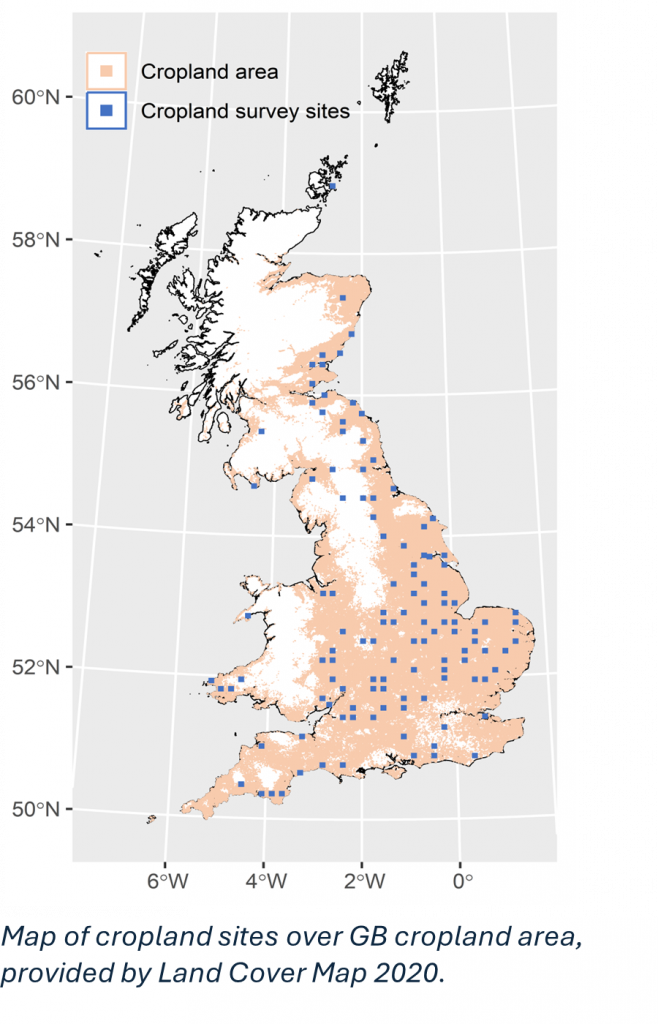
Future monitoring by the UKCEH Countryside Survey, which is now in a new monitoring cycle due to report towards 2028, will be able to report on the future trajectory of these trends and provide additional context on the drivers of change from this period, which will be fully supported by satellite data not previously available.
“This important and timely study by Bentley et al. is a key output from the UKCEH Countryside Survey, the longest-running integrated national monitoring program in Great Britain. 2024 was the warmest year on record, and recent reports warn that we have three years left before the 1.5°C warming threshold is irrevocably exceeded. Individuals may feel powerless to act in the face of climate change. This new research suggests that by changing soil management practices, farmers can help reduce atmospheric CO2 levels. Farmers across the UK have been implementing these practices typically at their own risk, and this research indicates that their efforts can contribute positively to addressing climate change.”
Prof. Jenni Dungait, Editor-in-Chief of European Journal of Soil Science
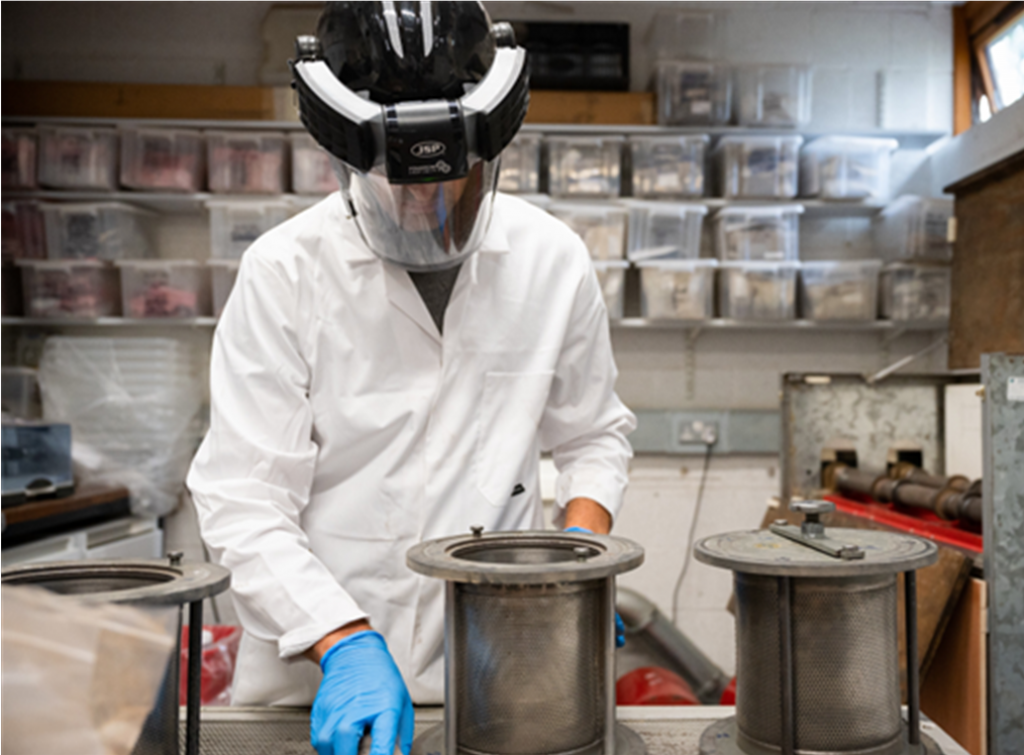
UKCEH laboratory staff prepare for soil analysis
“This exciting new paper demonstrates the importance of monitoring and studying soil resources. The results go against common perception, offering hope that some modern farming practices may be starting to reverse long-term trends in declining topsoil organic carbon. The UK and nations globally need greater investment to obtain a deeper understanding of the drivers and impacts down the entire soil profile.”
Prof. Paul Hallett, BSSS President
The lead author on the study, Dr Laura Bentley, featured on a British Society of Soil Science webinar in the Zoom into Soil series, speaking about the study.
The study has been published in the European Journal of Soil Science. To view the full study, click here

